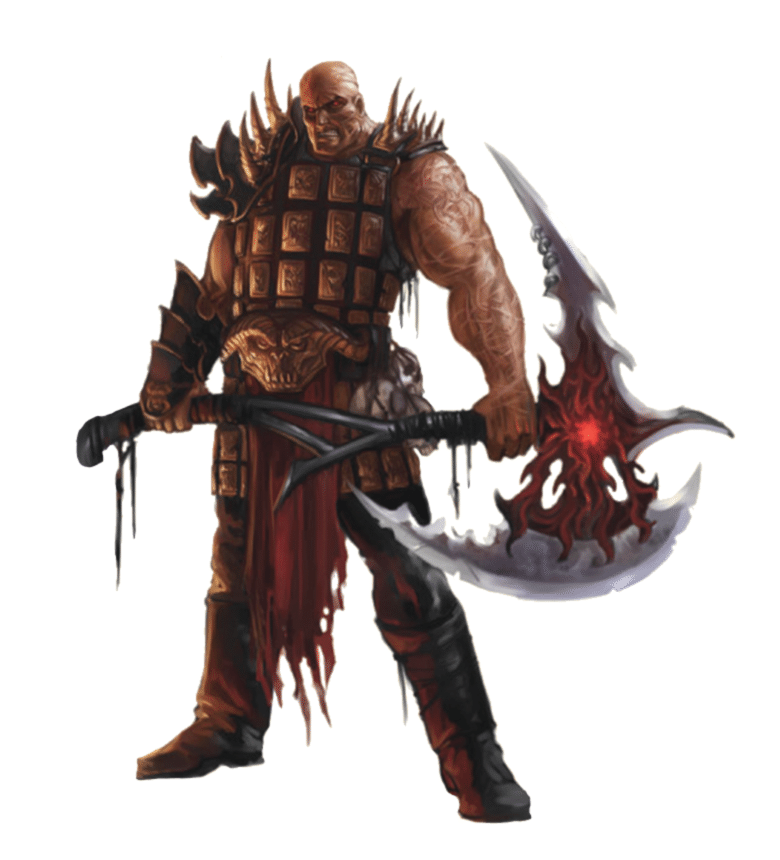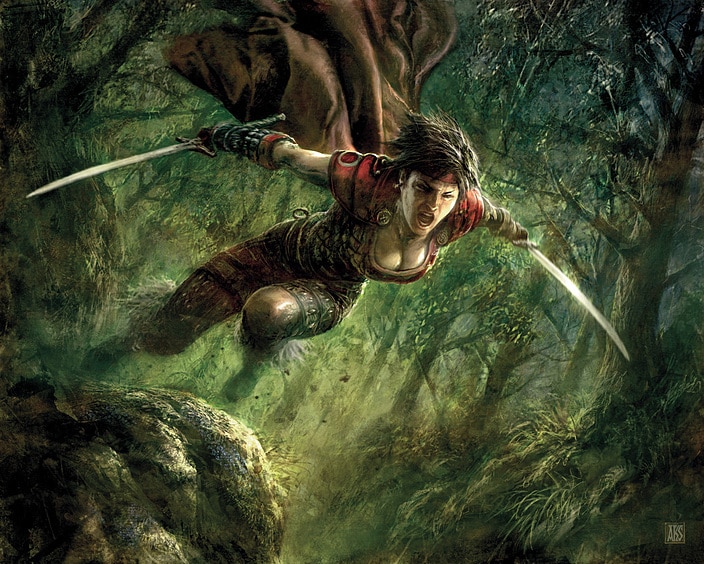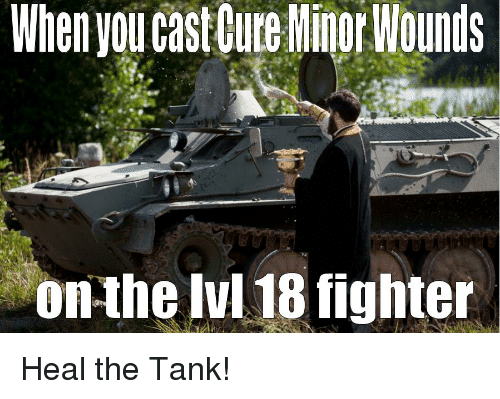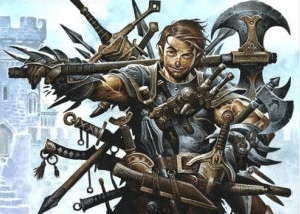You have become level one in the fighter class. Superb! But before you begin slaying your foes you should be prepared and hone your skills to make sure you are at your peak. And what better way than to go over your very first choice in detail. Below I will talk about the 6 fighting styles that are legal to play in Dungeons and Dragons. The list will include: “Archery”, “Defense”, “Dueling”, “Great Weapon Fighting”, “Protection”, and “Two Weapon Fighting”. It will not only just give you the basic concept of each, but also a detailed review on rules regarding them as well as statistics to show how effective they are. So, without further a due, let’s begin.
Fighter Class: Archery
So, the most specialized of all the fighting styles is archery. This gives you a flat +2 to hit. If you are unsure about what that means, it basically means that at level 1 you are 17% more likely to hit. Then what are the advantages? Well, first off, you greatly increase your chances to hit and do damage. Second of all, if you think you will be fighting people with high Armor Class, then your percentage actually increases on chances to hit!
The downside for this is pretty heavy too. For instance, you do not gain any bonuses on using melee weapons. This means that if you are using a ranged weapon next to an enemy, you must roll at disadvantage. This basically means you take a -5 to hit which drastically reduces your chances of hitting with a ranged weapon. If you are curious on the whole advantage and disadvantage mechanic, then I actually have a really cool article on my website here. Therefore, you now must use melee weapons to forgo the disadvantage which uses up action resources. Furthermore, you also are now using weapons that gain no additional bonus too drastically reducing your effectiveness in combat. This means I would recommend those who wish to use this style be sure their party can block enemies from reaching them.

Fighter Class: Defense
If after reading “Archery” and you don’t like its specialization, then might I suggest the broadest style “Defense”. This style for the 5e fighter class is the broadest and simplest one. Basically, what happens is you gain a +1 to your AC when wearing armor. This reduces your chances of being hit by attacks by roughly 5% at level 1. This carries over to you taking 12% less damage over the long run. This is great for any in the fighter class as it shores up your defenses and decreases your chances of dying. It is great for those wishing to stay alive to protect their allies. Besides that, there are no other big advantages from the style.
There are two big disadvantages to this style with that said. One you are sacrificing damage. The reason being is why you might stay up longer your hits are no longer doing as much damage as you could do since you are not as accurate as if using “Archery” style nor those with the other styles mentioned below. The second disadvantage of “Defense” for the fighter class in 5e, is that this does nothing against attacks that require saves.
For instance, spells like Hold Person and Fireball force the targets to make saves against their DC (difficulty class). Failure can cause things like taking 32 points of damage or being paralyzed in front of the enemy. Both being extremely painful, and stuff your style does nothing to protect you against. Therefore, choose this one if you plan on fighting a lot of people who attack you and are not spellcasters.
Fighter Class: Dueling
The third style to choose from is Dueling. Dueling is a damage booster for those who wish to fight with a one-handed weapon. This is great for those who wish to use a weapon and shield to boost defenses and still do damage. What this style does, is when wielding a weapon in one hand and no other weapons in the other, add +2 damage. This roughly translates to increasing your damage by 25% at level one. This makes you great for staying defensive with a shield and also still doing damage with your sword.
Now, what might be the disadvantages to this? Well for starters, no weapon in the other hand means you can’t wield two weapons or use two-handed weapons for the damage to take place. Second of all, let us say you are using a longsword. A longsword does on average 4.5 damage, before stat modifier. If you wield with 2 hands you increase it to 5.5 damage. Now normally if you do not have a shield you would do this to increase damage. Now you are incentivized not to so you can do 6.5 damage. It can feel weird to some people I have played with so I figured I would mention it. I should also mention, I actually love this one as I love playing sword and board fighters, and this is perfect for those playing like this.

Fighter Class: Great Weapon Fighting
This is designed for those that like to fight with two-handed weapons. What this effectively does is when you wield a two-handed weapon like a greatsword, if your damage die is a 1 or 2 you can reroll and must use the new one. This at first sounds great. However, on average it nets you a +1 to damage on average making it statistically not a great style. Now that said, this is another one that I actually love. Not for statistical reasons, but because it makes me feel good.
You see Polearms do 1d10 damage. Yet the most disheartening thing I can do when using a polearm is rolling a 1 on damage. With this style, I can now reroll the 1 and potentially get a 10 reversing that low damage hit to an awesome one. Also, seeing as it is the only one for two-handed weapons, I enjoy it much more than “Defense” as that is just effective for all.
Great Weapon Fighting: Disadvantages
Then what are the disadvantages, well the biggest one was a misconception regarding the Paladin’s smite. Many people at first thought it was applied to their smite which would mean they could potentially reroll 6 dice in an attack making its’ damage output huge. This was clarified by one of the designers for the 5e Fighter Class, Jeremy Crawford. He clarified that it was just to pure weapon damage from a two-handed weapon. The second disadvantage is it does not work for wielding one-handed weapons unless you use the versatile property for weapons like longswords where you can then reroll the dice as you are wielding it with two hands. With that said, these are the big disadvantages I found for the style. But if you want to wield two-handed weapons and don’t like rolling ones, then this is the best style for you.
Fighter Class: Protection
“Protection”. If you want to wield a shield and have no need for your reaction, this is a solid pick. What this style does is it allows you to force the enemy to roll at disadvantage against an ally of yours as long as they are within five feet. Now, this is huge as that means they take effectively a -5 to hit. To put it another way, they go from a 50% chance of rolling a 10 or higher, to only a 30% chance of doing that. This is the ultimate party protection-based style, making it aptly named.
The big disadvantage to this though, is that it costs your reaction which you only have one of per turn. Your reaction can be used for a multitude of things but mainly for opportunity attacks from those trying to run away from you. This greatly decreases damage output as you now miss free attacks against an opponent. The second disadvantage is that in 50% of situations, ignoring modifiers, your disadvantage did nothing to change the outcome. This said the other 50% of times are life savers.
The final big disadvantage is it requires a shield to be in your hand and ally must be within five feet. This limits what weapons you can use to have an active fighting style, while also forcing the front-line member to be within 5ft of allies who are potentially squishy. So, as you can see, why it may be best for protecting the party, it comes at a heavy cost of proper positioning and action use. That said, if you have faith that your party can do more damage than you can and need protecting, this is a great match.

Fighter Class: Two-Weapon Fighting
Congratulations! You are on the last fighting style for the class. Now maybe you already know what you want to play but this is definitely another one to consider. Basically, what happens here is you now add your ability modifier damage to your off-hand attack. This increases the damage you deal with your off-hand significantly. That said there are a lot of disadvantages to this style statistically. If you click here it will take you to a forum called StackExchange that goes into all the math.
But if you’re not a math person, what is basically boils down to is why max damage might be higher for the style, your average damage is lower making this subpar. Now if you want to be a dashing duel wielder, then, by all means, do it as DnD is not all about statistics but also role play. Believe me, the dashing duel wielder is by far an insanely fun fighter class in 5e.
Two-Weapon Fighting: Action Economy
Now besides the lower damage average, the other big disadvantage is the action economy. Now action economy is the biggest thing for being optimal as it is your most heavily controlled resource. It is hard to manage as there are so many things you can do with your action, bonus action, and reaction. The downside is you are only granted one of each per turn and there are few ways to get it. Well, with this style you now are forced to use your bonus action to attempt to hit and be as optimal as possible to attacks. This makes your action economy harder to balance and can lead to waste of an attack if you miss. This all said it is by far the “funnest” style in my book as there is so much inspiration to take from this style to use in your roleplay.

Take A Rest
So, these are the fighting styles for the fighter class of 5e. If you are now wondering what happens afterward, then click here for the fighter guide that I posted. And if you do enjoy it. I highly suggest playing battle masters archetype. Not just because they are extremely strong, but because the roleplay ability of them is insane as well. You can find them in the essential Player’s Handbook that gives you all the basic classes and subclasses for DnD 5e. If you are done reading for the day, pat yourself on the back and enjoy the fighter class meme I have above this. I wish you all a wonderful day and just keep on rolling!
- P.S. If you enjoyed this post and others like this, subscribe to my Patreon and help decide on what content will be released as well as get exclusive posts only available to subscribers with all charts used included!


Thanks for the thoughtful review. I’ve always struggled with the almost wholesale departure from feats in the move to 5e from 3.5e, particularly when it comes to Fighting Styles. Although, the streamlining is appreciated, I cannot help but wish some of the optional complexity/specialisation/depth was still there.
Thank you so much for the review! I also struggled with the switch as well. Once I got used to it though, I have found myself really enjoying the ease of how they streamlined the system. But I know it can be a challenge so I figured I would go over them in detail. Let me know what you think about the other posts, and if you have a topic you want me to write about let me know! Hope you have a phenomenal day!